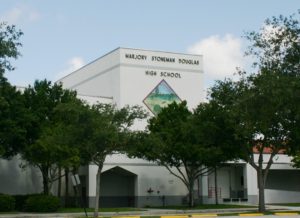The Marjory Stoneman Douglas High School Public Safety Commission followed up their draft report with a 458 page assessment of its investigation surrounding the shooting incident in Parkland, FL. This most recent report details a litany of system, security and performance failures which contributed to the deaths of 17 students and staff in early 2018. These failures include breaches in school security, as well as a lack of cohesive police protocol for an active shooter situation.
Perhaps most tragic of all, is evidence in the report of how the attack might have been prevented as well as how the damage could have been greatly mitigated. For example, the attacker exhibited violent behavior as early as age three. This behavior continued regularly and frequently throughout his life.
 There were warning signs the attacker displayed in the years leading up to the shooting that were not addressed or followed up on — clues on social media, 43 family contacts with the police department about behavioral problems and violence, and at least 30 people that voiced concerns to law enforcement, school officials and even the FBI.
There were warning signs the attacker displayed in the years leading up to the shooting that were not addressed or followed up on — clues on social media, 43 family contacts with the police department about behavioral problems and violence, and at least 30 people that voiced concerns to law enforcement, school officials and even the FBI.
In addition, the report also chronicles a breakdown of security protocol and system failures that also contributed to the attack. By seeing where things went wrong, schools around the country can take a closer look at their own protocols, and make improvements.
Report Findings from the Parkland Incident
- The school had no official Code Red Policy or procedure in place.
- Gates were left open and unattended, and access doors were left unlocked and unattended. This allowed the attacker to easily enter the campus, and following, access the buildings and classrooms.
- The classroom doors in the building were only able to be locked from the outside. The report found that the teachers inconsistently locked classroom doors and during the attack some doors were unlocked. This put students and staff at risk.
- The school lacked a PA speaker system in the hallway which would have alerted occupants of the attack. Instead, the fire alarms went off, which sent students into the halls during the shooting.
- The glass windows in the classroom doors allowed the attacker to have line-of-sight access to target victims. There were no pre-designated window coverings for teachers to quickly cover their classroom door windows.
- Only two of the 30 classrooms in the building had marked “hard corners”. Hard corners are secure, uncluttered spaces in the rooms, where students and teachers can hide from shots coming through small windows in doors. According to this article, commission members are already asking the Broward County School District to create a policy requiring them in every classroom.
- The school security team on campus did not initiate any Code Red warnings in the early stages. As the attacker walked onto campus, one team member recognized the assailant, and recalled that he had been recently dismissed due to the threat he presented to the school. The attacker was also seen carrying a riffle bag while walking onto campus; this did not prompt any code red alerts from the campus security team either. Even after a gunshot victim was discovered, an alert was still not initiated.
Taking Steps to Protect Schools
Following the investigation, the Commission implores:
“All stakeholders—school districts, law enforcement, mental health providers, city and county governments, funding entities, etc. — should embrace the opportunity to change and make Florida schools the safest in the nation.”
Schools and districts can start to implement some of the basic recommendations right away. One such recommendation is “target hardening”. In essence, Target Hardening is the strengthening of a building in order to prevent crime and protect occupants during an attack.
A complete list of the Commission’s Target Hardening recommendations can be found on page 345 of their report. Find the Commission’s report here, in its entirety.
We’ll discuss “target hardening” and specific suggestions from the report in our next blog installment (coming next week): Defending Your School: Target Hardening.
To discuss your school or district’s unique security concerns, contact our team. We’ll do an assessment of your campuses and put together a plan to fit your needs. Call us to learn more about how your school can implement some of these suggestions for school safety. Free consultation: 866-676-7176.
Sources include: NPR, and the report (link above).
Marjory Stoneman Douglas High School photo: Wikipedia.

